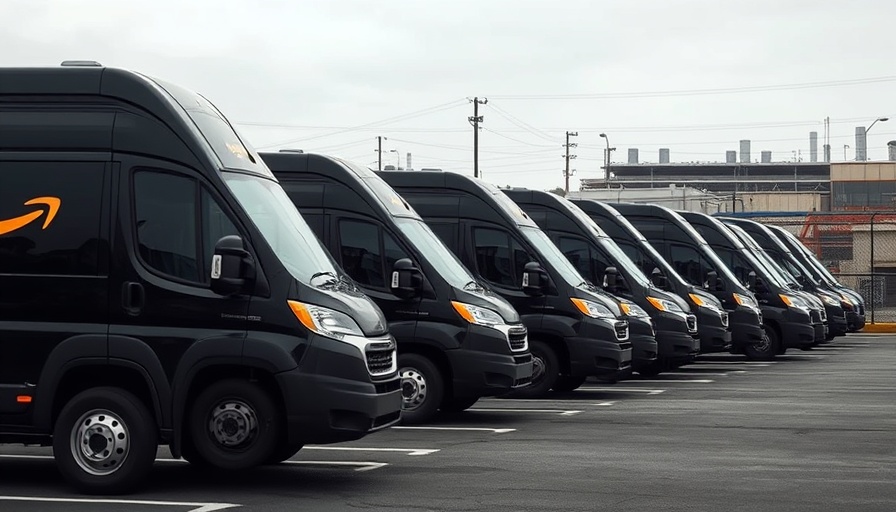
Amazon Flex Workers Face Unexpected Restrictions on Scheduling
Amazon, a giant in the global economy, promotes its Flex program as a groundbreaking opportunity for gig workers. However, a new report raises questions about the reality behind this claim, suggesting that many Amazon Flex drivers experience significant limitations that restrict their freedom and earnings potential.
Unpacking the Findings from the NELP Report
The National Employment Law Project (NELP) released a report on July 9, 2025, revealing that Amazon Flex workers may not enjoy as much flexibility as they had hoped. The study, conducted by researcher Maya Pinto, includes testimonies from eight Flex members in New Jersey who are organizing for better work conditions. Notably, two of these drivers reported that the Amazon app often locks them out after working roughly five hours, effectively limiting them to under 40 hours a week, including weekends.
Conflicting Perspectives: Amazon's Response
In response to the report, Amazon spokesperson Amber Plunkett stated that the company had not thoroughly reviewed the findings and suggested that NELP might be leaving out critical context to fit its narrative. Representatives from Amazon argue that Flex indeed offers competitive wages and varied shifts depending on demand, asserting, "The fact is, for nearly a decade, Amazon Flex has empowered delivery partners across the country to deliver Amazon packages on their own schedules with competitive earnings." Yet, as the report indicates, workers seem to have a different story.
The Truth About Flexibility in Gig Work
Amazon Flex is often positioned alongside other gig economy platforms like Uber and Instacart, which emphasize the liberty that comes with independent work. Still, evidence suggests, as demonstrated by the recent experiences of Amazon Flex drivers, that flexibility in gig work is often a myth rather than a reality. For instance, like ride-hailing drivers who face fluctuating demand, Flex workers too contend with significant restrictions. This raises the question: How flexible can a gig job truly be when external factors dictate work availability?
Strategies for Navigating the Gig Economy
For drivers navigating the Amazon Flex landscape, understanding the nuances of scheduling can be a game-changer. Many drivers recommend remaining alert and claiming high-paying shifts as soon as they appear. For instance, one driver noted checking the app regularly for lucrative shifts that can pay up to $30 an hour compared to the usual $20-an-hour offerings. Such proactivity may help drivers maximize their earnings while contending with the platform's inherent restrictions.
What This Means for Gig Workers Looking Ahead
As the gig economy continues to shape modern work-life dynamics, the insights presented in the NELP report serve as crucial reminders for anyone considering gig work. With labor patterns shifting dramatically amid ongoing economic changes, it is essential to understand both the advantages and the pitfalls of platforms like Amazon Flex. Future workers should approach gig opportunities with caution, recognizing that the promise of income and flexibility may come with strings attached.
Commentary on Broader Economic Trends
The discussion surrounding Amazon Flex encapsulates a broader conversation about gig work's role in today's economy. As businesses adapt to hybrid business models, understanding the nuances and potential hurdles in gig employment is vital for aspiring entrepreneurs and small business owners alike. Moreover, these insights may spur critical discussions about labor rights and the need for fair treatment across gig platforms.
Inspiring Change through Awareness and Advocacy
The experiences of Amazon Flex workers remind us that advocacy and awareness can lead to improvements not just for independent contractors but also in business models that may need rethinking. The evolution of work demands continued advocacy for fair practices, particularly in the growing gig economy. Staying informed on current events and economic trends 2025 can help empower workers and entrepreneurs seeking to navigate this new landscape effectively.
If you are considering becoming a part of the gig economy, learn from these insights to ensure you're making informed decisions. There is power in understanding your rights and advocating for fair work conditions. Stay connected to discussions about labor rights and business strategies to equip yourself with the knowledge needed for success!
 Add Row
Add Row  Add
Add 




 Add Row
Add Row  Add
Add 

Write A Comment